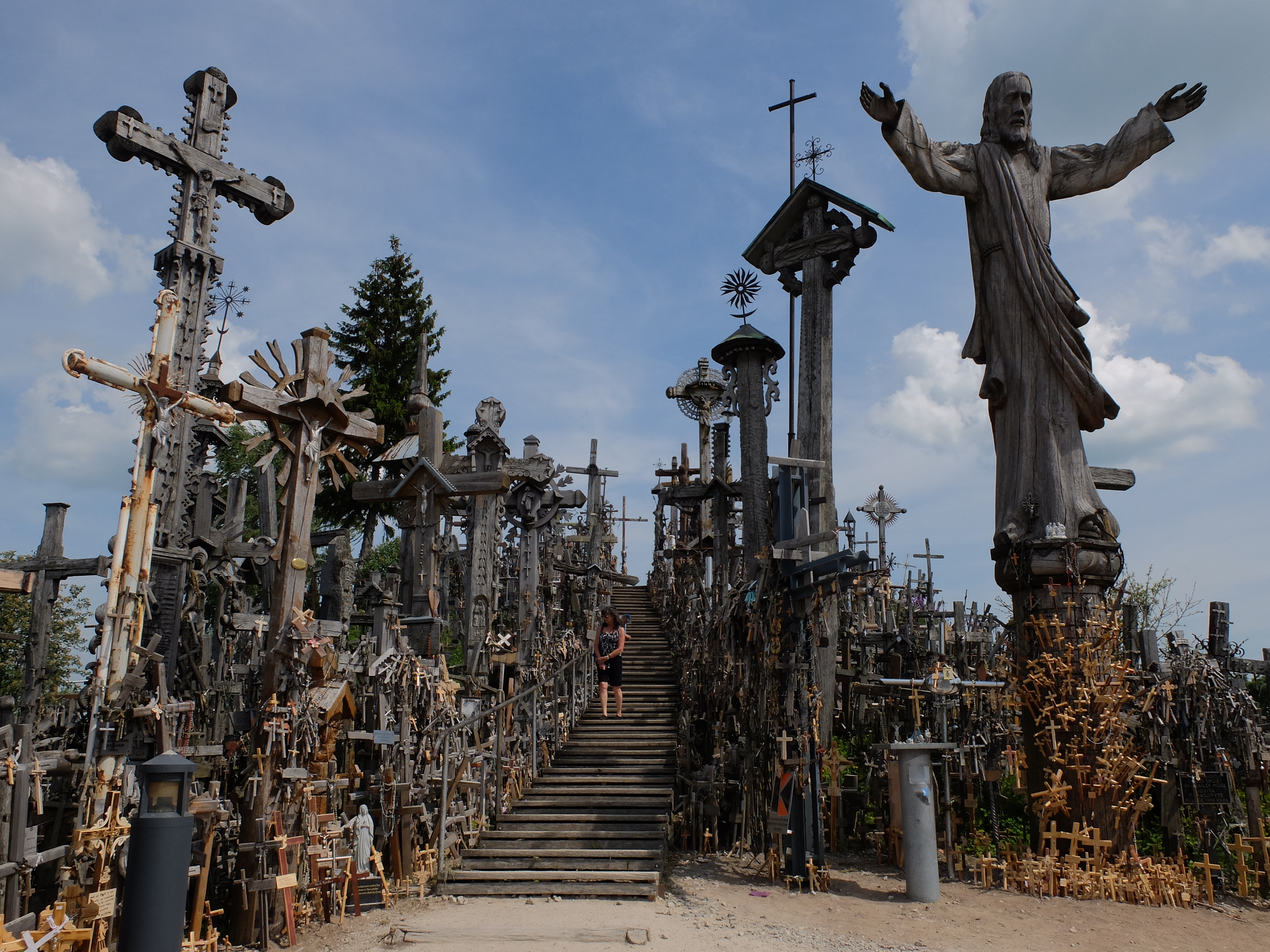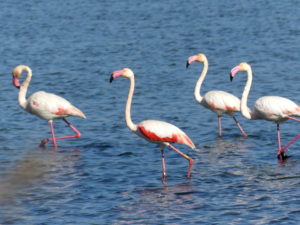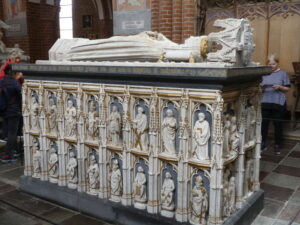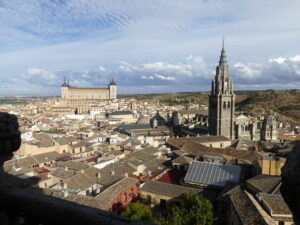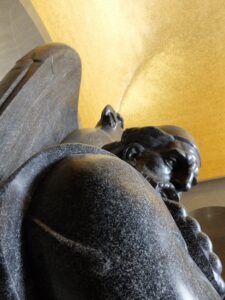
Heading from Vilnius to Riga, we diverted a bit to visit the renowned Hill of Crosses (Kryžių kalnas) near Siauliai, Lithuania. It’s really just two coupled mounds beside a country road in the middle of very flat fields. Yet on them hundreds of thousands of crosses have been planted, carved, hung, or stuck.
You can’t help but be impressed with the site as you climb the 30 or so steps up the tallest hill and walk around the lanes that cut around them. The crosses range in size from just a few centimeters to several meters tall. And they very in materials, from roughly formed to elaborately carved wood, to plaster sculptures, to all kinds of metal including metal piping and wrenches. Even the Pope contributed a statue, though one of a teaching Jesus rather than a crucifix.
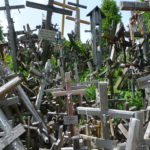
Some crosses are just heaped up in their own little mounds; some form neat rows; some festoon other crosses or the stubby pines that remain on the hill. These draped crosses (or beads) often tinkle and chime in the winds that sweep from the nearby plains. We were fascinated by the variety of styles and placement as we walked about.

Our Lithuanian friends had said we must come here, as the hill is perhaps the holiest place in Lithuania. It has long been an important pilgrimage site for Catholics. Yet the reason for its importance goes beyond its evident religious quality. During the cold war, brave Lithuanians risked their lives to place crosses on the hill time and again, defying the Soviet regime’s continual bulldozing of the site.
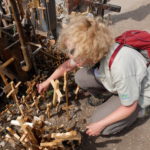
Even now, Lithuanians and foreigners add crosses to remember the past or a loved one. We saw many inscribed with the names of friends or family members. But we didn’t witness a lot of reverence during our visit; most of the visitors had arrived in hordes on tour buses to gawk for a few minutes.
At the small visitor center discreetly tucked away about a half-kilometer from the hillside, visitors can purchase crosses of varying qualities and prices, from simple pine or oak for 1 Euro, to much more elaborate ones with decorative stones for 20 Euros or more. Our friends had also told us to buy one and add it to the hill, just as Lithuanians would.
Nancy purchased a small, oak cross with the figure of an angel and the words, in Lithuanian, “May the Lord Keep Us.” She planted it in the ground for her father, who had died about two years earlier. As our friends had said, doing this felt right.
(Also, for more pictures from Estonia and the Baltics, CLICK HERE to view the slideshow at the end of the Baltics itinerary page.)


